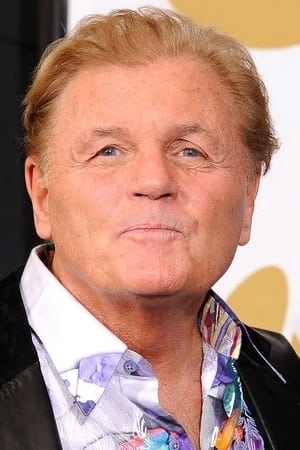Bruce Johnston (b. 1942)
Alias:
The Beach Boys
Birthplace:
Peoria, Illinois, USA
Born:
June 27, 1942
Bruce Arthur Johnston (born Benjamin Baldwin; June 27, 1942) is an American singer, musician and songwriter who is a member of the Beach Boys. He also collaborated on many records with Terry Melcher (his bandmate in Bruce & Terry, the Rip Chords, and California Music) and composed the 1975 Barry Manilow hit, "I Write the Songs". Born in Illinois, Johnston grew up in Los Angeles and studied classical piano in his early years. While in high school, he arranged and played on his first hit record, Sandy Nelson's "Teen Beat" (1959), and also worked with musicians such as Kim Fowley and Phil Spector. One of Johnston's first gigs was as a member of the surf band the Gamblers before becoming a staff producer at Columbia Records. In 1965, Johnston joined the Beach Boys for live performances, initially filling in for the group's co-founder Brian Wilson. Johnston's first appearance on the band's records was as a vocalist on "California Girls" (1965). He later contributed original material to the group's albums, including "The Nearest Faraway Place" on 20/20 (1969), "Tears in the Morning" and "Deirdre" on Sunflower (1970), and "Disney Girls (1957)" on Surf's Up (1971). Johnston left the Beach Boys in 1972 and subsequently embarked on a solo career. During this time, Johnston recorded one solo album, Going Public (1977), his latest to date. In late 1978, he rejoined the Beach Boys to co-produce the group's L.A. (Light Album) (1979). Since then, he has continued to tour as a member of the band. Born in Peoria, Illinois in 1942, he was adopted as child by William and Irene Johnston of Chicago and grew up in the wealthy Los Angeles neighborhoods of Brentwood and Bel-Air. His adoptive family is of Irish descent, with his grandparents hailing from Markethill, County Armagh. His adoptive father was president of the Owl Rexall Drug Company in Los Angeles after moving from Walgreens in Chicago. Johnston attended the private Bel Air Town and Country School (later renamed John Thomas Dye School) and the University of California, Los Angeles. He also studied classical piano in his early years, training at Interlochen Arts Camp as a youth. In high school, Johnston switched to contemporary music. He performed in a few "beginning" bands during this time and then moved on to working with young musicians such as Sandy Nelson, Kim Fowley, and Phil Spector. Soon, Johnston began backing people such as Ritchie Valens, the Everly Brothers, and Eddie Cochran. In 1959, while still in high school, Johnston arranged and played on his first hit record, "Teen Beat" by Sandy Nelson. The single reached the Billboard Top Ten. The same year, Johnston made his first single under his own name, "Take This Pearl" on Arwin Records (a record label owned by Doris Day) as part of the Bruce & Jerry duo (Jerry Cooper was a high school friend of Bruce's). The teenage Hot Rod film entitled "Ghost of Dragstrip Hollow" (1959), features the song "I Promise You" by Johnston and Judy Harriet. In 1960, Johnston started his record production career at Del-Fi Records, producing five singles and an album – Love You So – by Ron Holden (many of the album's eleven tracks were written or co-written by Johnston). ... Source: Article "Bruce Johnston" from Wikipedia in English, licensed under CC-BY-SA 3.0.
